Imagine waking up in a cozy, beautifully designed oasis – a sanctuary that defies the limitations of its compact size. Small bedrooms often feel cramped and cluttered, but what if you could transform that tiny space into a functional, stylish retreat? With some creativity and strategic planning, even the most diminutive bedroom can become a multifaceted haven that seamlessly blends comfort, organization, and visual appeal.
In today’s urban landscape, where square footage comes at a premium, maximizing every inch of living space is crucial. Homeowners and renters seek innovative solutions to make their small bedrooms feel more spacious and efficient and reflect their style. Whether you’re a design enthusiast or simply seeking to optimize your limited bedroom area, this article will guide you through five ingenious layout ideas that transcend the traditional bed-centric approach.

From leveraging vertical space to incorporating multifunctional furniture, we’ll explore strategies that create an illusion of spaciousness and enhance the functionality and aesthetic appeal of your compact sleeping quarters. Prepare to be inspired as we delve into unconventional layouts, focal point creation, and traffic flow optimization – all tailored to help you unlock the full potential of your small bedroom.
So, let’s embark on a journey of creativity and spatial mastery, where even the tiniest of rooms can become a captivating oasis that perfectly harmonizes form and function.
Maximizing Vertical Space
Every inch of floor space in a small bedroom is precious real estate. Maximizing the vertical dimension is one of the most effective ways to create a sense of openness. By strategically utilizing the often-neglected vertical space, you can unlock a world of possibilities for storage, organization, and even sleeping arrangements.
Lofty Sleeping Solutions
Loft beds and bunk beds are game-changers when it comes to maximizing vertical space in a small bedroom. These elevated sleeping platforms free up valuable floor areas and create opportunities for additional storage or even a cozy seating nook underneath. When choosing a loft bed, consider factors such as ceiling height, room dimensions, and your personal preferences for style and functionality.
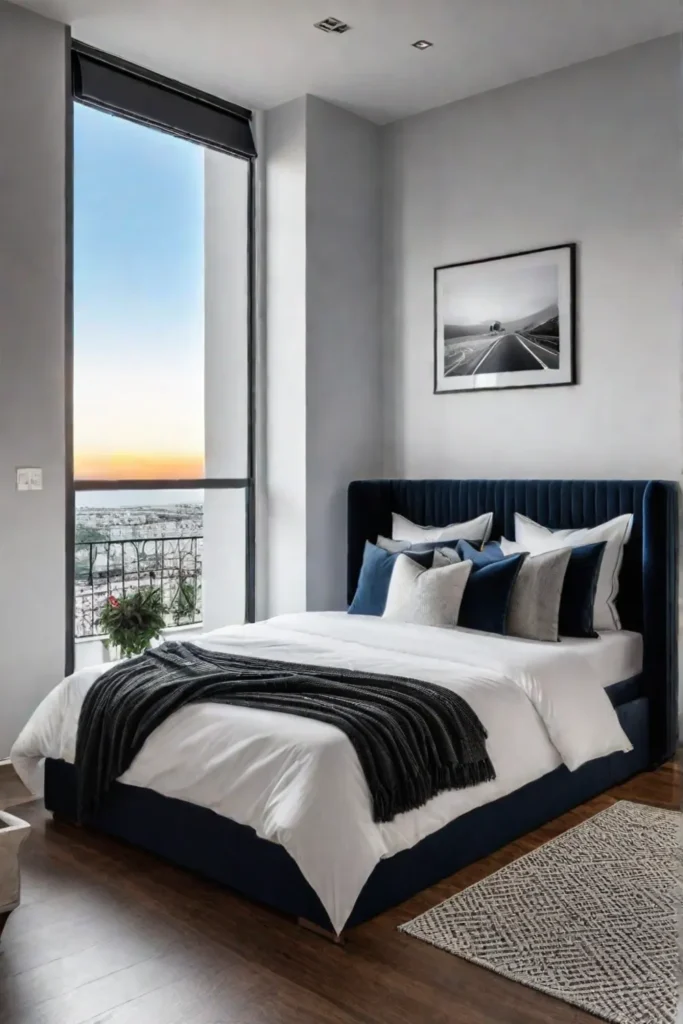
For instance, a sleek, minimalist loft bed with built-in shelving or a desk can seamlessly integrate into a modern, urban aesthetic. In contrast, a rustic wooden bunk bed with a cozy reading nook below might suit a more traditional or bohemian vibe.
Wall-Mounted Wonders
Embracing wall-mounted storage solutions is another ingenious way to capitalize on vertical space. From floating shelves to hanging cabinets, these versatile options keep your belongings organized and free up floor space, creating the illusion of increased square footage.
Consider installing floor-to-ceiling shelving units or a wall-mounted headboard with built-in shelves to maximize every inch of available wall space. You can even get creative with DIY projects, such as repurposing old ladders or wooden crates into rustic, space-saving shelves that add character to your small bedroom.
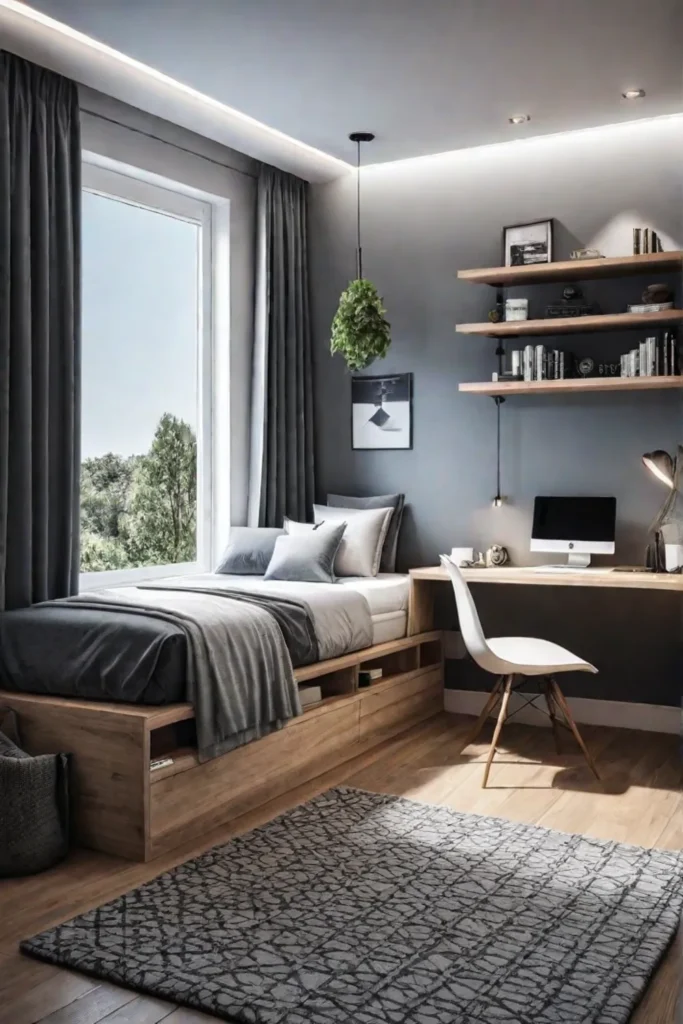
Under-Bed Organization
While exploring vertical storage solutions, don’t overlook the often-underutilized space beneath your bed. Invest in sturdy, low-profile storage containers or rolling drawers that seamlessly slide under your bed frame. This hidden storage area is perfect for stashing seasonal clothing, extra bedding, or other rarely used items, keeping your small bedroom clutter-free without compromising organization.
By embracing these vertical space-saving strategies, you’ll create a more open and airy atmosphere and ensure that every nook and cranny of your small bedroom is utilized to its fullest potential.
Multifunctional Furniture: The Key to Versatility
In a small bedroom, every piece of furniture must earn its keep by serving multiple purposes. Embracing multifunctional furniture is a game-changer, allowing you to maximize functionality without sacrificing style or comfort. You can create a space that adapts seamlessly to your ever-changing needs by carefully selecting versatile pieces.

Convertible Chameleons
Consider incorporating convertible furniture that can easily transform from one function to another. For example, a sleek, modern murphy bed that folds into the wall during the day can instantly transform your bedroom into a spacious living area or home office. Alternatively, a sofa bed or futon can provide seating and sleeping accommodations, making it an ideal solution for small guest rooms or studio apartments.
Storage and Seating Synergy
Ottomans and benches with built-in storage compartments are true multitaskers in a small bedroom. They not only provide additional seating but also offer a discreet and stylish way to stash away extra blankets, pillows, or seasonal clothing. Look for pieces with lifting lids or hinged tops for easy access to the hidden storage space.
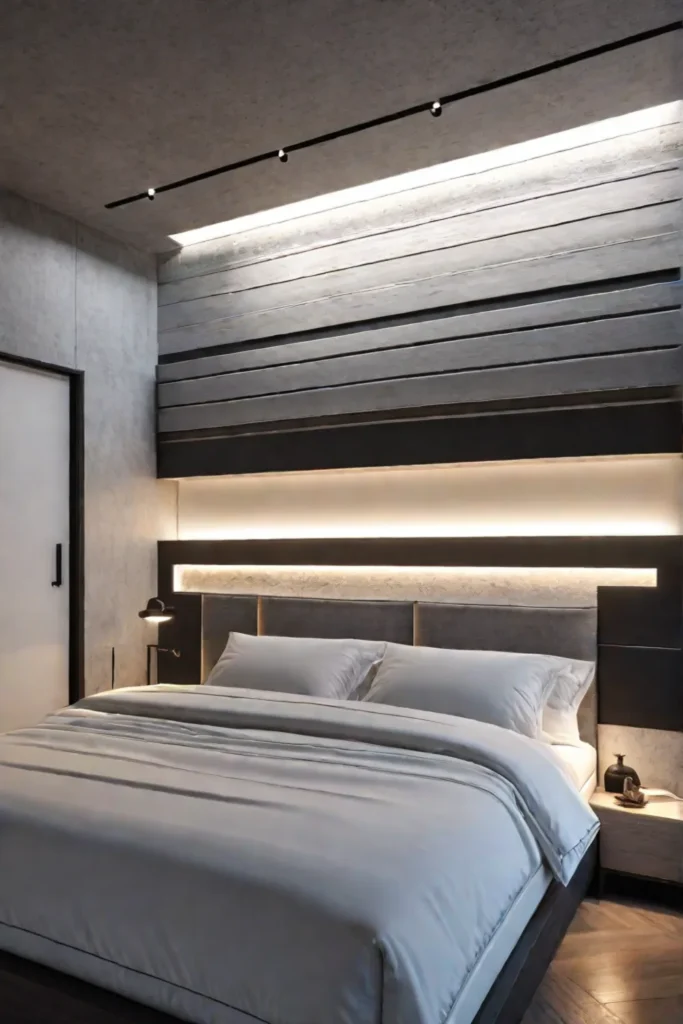
Desk and Dresser Combos
For those who need a dedicated workspace within their small bedroom, consider investing in a desk and dresser combination piece. These innovative furniture solutions seamlessly merge a functional desk with ample drawer space, allowing you to keep your work essentials and wardrobe organized in one compact unit.
By embracing multifunctional furniture, you’ll maximize the utility of your small bedroom and create a space that effortlessly adapts to your ever-changing needs, whether you’re working, entertaining, or simply seeking a peaceful retreat.
Optimizing Traffic Flow: A Path to Seamless Movement
In a small bedroom, the layout and furniture arrangement can greatly impact the flow of movement, making it crucial to optimize traffic patterns for functionality and aesthetic appeal. By carefully considering walkways, furniture placement, and flexible design elements, you can create a space that feels open, inviting, and effortlessly navigable.
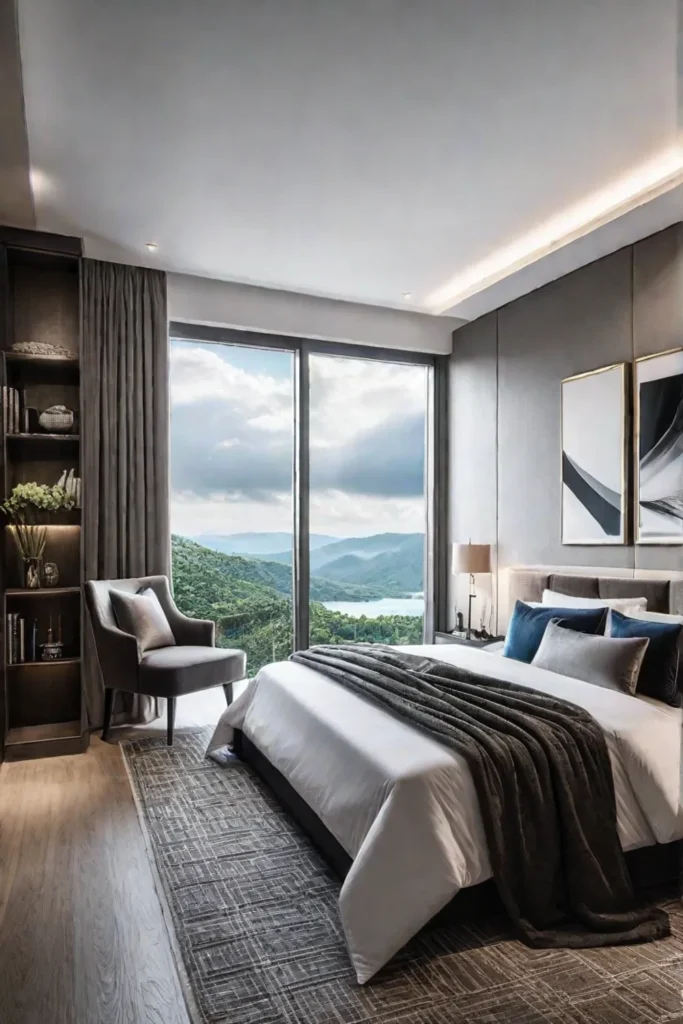
Identifying Primary Pathways
Begin by identifying the primary traffic routes within your small bedroom. Typically, these paths lead from the door to the bed, closet, or other essential areas. Ensure these walkways are clear and unobstructed, allowing smooth and comfortable movement.
Strategic Furniture Placement
When arranging your furniture, prioritize creating clear pathways and facilitating easy movement. Position larger pieces, such as the bed or dresser, against the walls, leaving the central area open for circulation. Consider using lightweight, mobile furniture that can easily be rearranged to accommodate different traffic patterns or activities.
Flexible Design Elements
Incorporating flexible design elements can further enhance the flow and adaptability of your small bedroom. Sliding or pocket doors are excellent space-saving solutions that eliminate the need for swing space, allowing for more efficient use of floor area. Alternatively, rolling nightstands or caster desks can be easily moved out of the way when not in use, creating a more open and unobstructed environment.
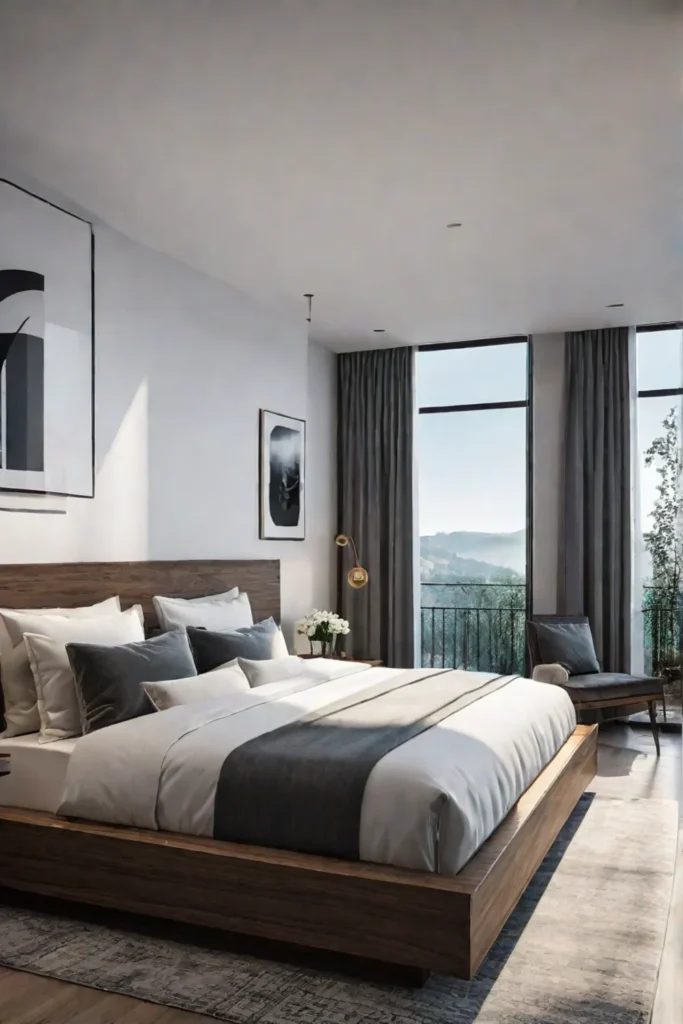
By optimizing traffic flow, you’ll not only create a more functional and comfortable living space but also contribute to a sense of openness and fluidity within your small bedroom.
Defining Focal Points: Creating Visual Interest
Strategically defining focal points in a small bedroom can be a powerful tool for creating depth, visual interest, and the illusion of spaciousness. By carefully curating these attention-grabbing elements, you can guide the eye through the space and add dimension to your compact quarters.
Accent Walls and Statement Lighting
One of the most impactful ways to create a focal point is through accent walls and statement lighting. A bold, textured wallpaper or a vibrant paint color on a single wall can instantly draw the eye and add depth to the room. Complement this with a statement light fixture, such as an eye-catching pendant or sculptural floor lamp, to enhance the visual impact further.

Framing a Central Point
Another effective technique is to arrange your furniture to frame a central focal point. This could be a cozy seating area, a vanity, or even a strategically placed piece of artwork. By positioning key pieces to create a natural “frame,” you’ll guide the viewer’s gaze toward the intended focal point, creating a sense of intentionality and visual interest.
Textures and Patterns
Don’t underestimate the power of textures and patterns in adding visual depth to a small bedroom. Incorporate tactile elements, such as a plush area rug, a textured throw blanket, or a woven headboard, to create layers and contrast. Additionally, strategically placed patterned wallpaper or bold textiles can introduce visual movement and draw the eye through the space.
By thoughtfully defining focal points, you’ll create a visually captivating environment and contribute to the perception of spaciousness within your small bedroom. These design elements will add depth, interest, and a sense of intentionality to your compact quarters.
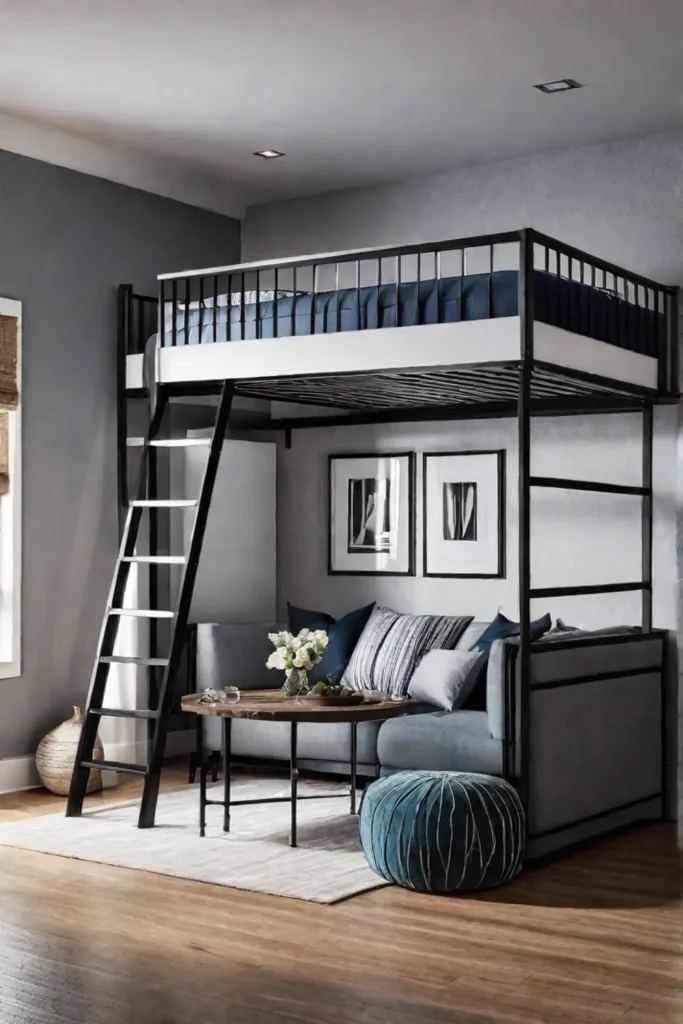
Experimenting with Unconventional Layouts
While small bedrooms often present unique challenges, they also offer the opportunity to think outside the box and experiment with unconventional layouts. By embracing creativity and pushing the boundaries of traditional design, you can unlock a world of possibilities for optimizing space, enhancing functionality, and infusing your style into every corner.
Non-Traditional Bed Placements
One of the most impactful ways to create an unconventional layout is by rethinking the placement of your bed. Instead of positioning it against a wall, consider tucking it into a corner or floating it in the center of the room. This unexpected arrangement adds visual interest and frees up valuable floor space for other functional areas.

Flexible and Modular Furniture
Incorporating flexible and modular furniture is another key strategy for creating adaptable and unconventional layouts. Opt for pieces that can be easily reconfigured or rearranged, such as sectional sofas, nesting tables, or modular shelving units. This versatility allows you to constantly evolve your space to suit your changing needs and preferences.
Maximizing Odd Spaces
Small bedrooms often come with quirky nooks, alcoves, and odd-shaped spaces that can be challenging to utilize effectively. However, with some ingenuity, these unique architectural features can become opportunities for creative solutions. For instance, a cozy reading nook can be carved out of an awkward corner, or a built-in desk can be seamlessly integrated into an alcove, maximizing every inch of available space.
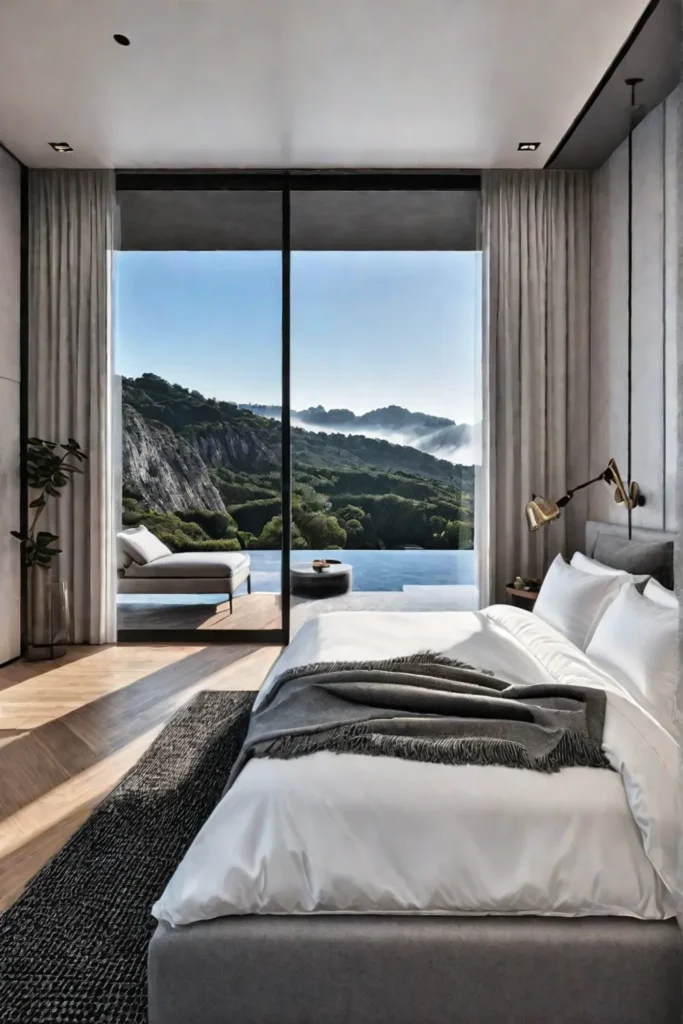
By embracing unconventional layouts and thinking beyond the traditional, you’ll create a space that reflects your unique personality and is tailored to your specific needs and preferences. Embrace the challenge of a small bedroom as an opportunity to unleash your creativity and design a truly one-of-a-kind living space.
Captivating Conclusion
As explored throughout this article, small bedrooms are not merely confined spaces but canvases for creativity and innovation. By embracing maximizing vertical space, incorporating multifunctional furniture, optimizing traffic flow, defining focal points, and experimenting with unconventional layouts, you can transform even the most modest sleeping quarters into a captivating oasis that seamlessly blends form and function.
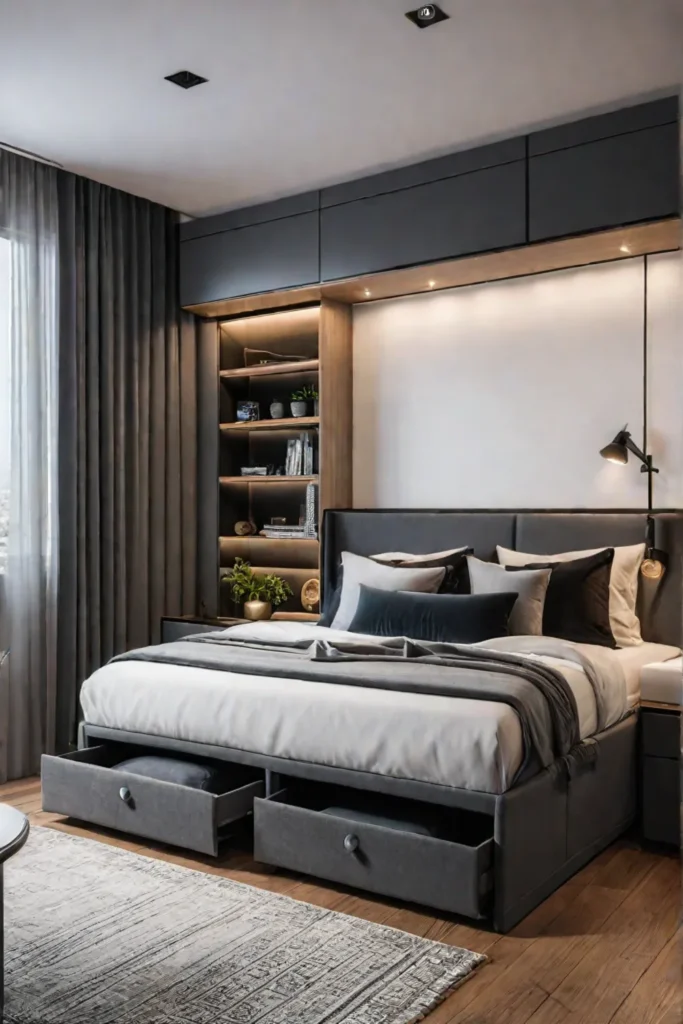
Remember, the key to success lies in thinking beyond the traditional bed-centric design and embracing a mindset of spatial mastery. By challenging conventions and exploring innovative solutions, you’ll unlock the full potential of your small bedroom and create a living space that truly resonates with your style and lifestyle.
So, embrace the principles outlined in this article, whether you’re a design enthusiast seeking to push creative boundaries or simply a homeowner yearning for a more functional and visually appealing small bedroom. Let your imagination soar and transform your compact quarters into a sanctuary that defies spatial limitations and celebrates the art of living well, no matter the square footage.






